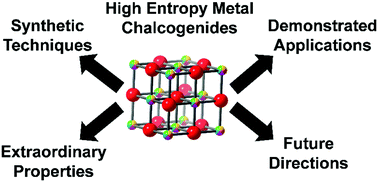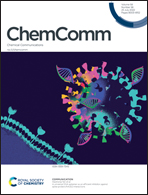High entropy metal chalcogenides: synthesis, properties, applications and future directions
Abstract
Metal oxides, sulphides, selenides and tellurides have routinely been investigated and utilised for a wide range of applications, in particular in the areas of energy (photovoltaic, thermoelectric) and catalysis (thermocatalysis, electrocatalysis and photoelectrocatalysis). A recent development in this chemical space is high entropy and entropy-stabilised inorganic materials, which took inspiration from preceding work on high entropy metal alloys (multicomponent alloys). High entropy inorganic materials typically have many (often ≥6) different cations or anions to yield a high configurational entropy, which can give unexpected structures and properties that are conducive to a broad range of applications in energy and catalysis. More recently still, high entropy metal chalcogenides have been developed and have been investigated for thermoelectric energy generation, batteries for energy storage and electrocatalysis. This review sets out to define entropic stabilisation in high entropy materials, along with a discussion of synthetic techniques to produce these compounds, focusing on high entropy metal chalcogenides including extant routes to high entropy sulfides, selenides and tellurides. The resulting advantageous properties of these materials due to their multi-element nature and the currently proposed and investigated applications of these materials are reviewed. We end the perspective with an opinion on future directions.

- This article is part of the themed collection: ChemComm Community – Dedicated Authors


 Please wait while we load your content...
Please wait while we load your content...